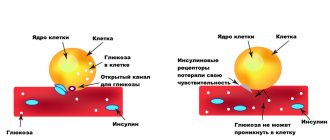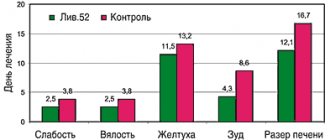According to the FDA (Food and Drug Administration), indirect anticoagulants (IAAs) are among the ten drugs most often associated with complications. Moreover, bleeding is perhaps the most frequent and dangerous of them. The incidence of their development in various clinical studies using NAC was approximately 2.0% (range 1.0 to 7.4%).
All bleeding complicating NAC therapy is usually divided into three categories:
1) fatal;
2) severe (requiring surgical intervention to stop them, transfusion of red blood cells, or accompanied by a decrease in systolic blood pressure (BP) below 90 mm Hg with oliguria or a drop in hemoglobin level by more than 2 g/l);
3) mild bleeding (all others).
Intracranial hemorrhage (ICH) is the most dangerous of all hemorrhagic complications of NAC therapy. It is believed that taking warfarin increases the risk of ICH by 8–10 times [1, 2]. Their frequency, according to various authors, is about 0.3–1.0% per year, and the share among all ICH is from 6 to 24% [3–5]. Intracerebral hemorrhages account for 70% of all warfarin-associated ICH, the remaining 30% are subdural and subarachnoid hemorrhages [1]. Although the risk increases with increasing international normalized ratio (INR), the majority of warfarin-associated ICHs occur when the INR is within the therapeutic range [6–9]. ICH during warfarin therapy occurs somewhat more often and with a lesser degree of hypocoagulation in Asians, Africans and Spaniards than in whites [10, 11].
In warfarin-associated ICH, mortality reaches 67%, which is approximately 2 times higher than in patients in whom hemorrhage occurred without the participation of anticoagulants [1, 9, 12]. Warfarin-associated ICH accounts for up to 90% of mortality from all warfarin-associated bleeding. MC Fang et al. [13] analyzed data from 13,559 adult patients with atrial fibrillation (AF) of non-rheumatic origin. 72 cases of ICH and 98 severe extracranial bleeding were identified. At the time of discharge, 76% of patients with ICH had severe disability or died.
Assessing the risk of developing ICH
It should be remembered that all patients have a risk of hemorrhagic complications during the treatment of NAC, but it is also quite obvious that the degree of risk varies among them. And the most difficult thing is to take into account all the facts “for” and “against” the use of NAC, i.e., ultimately making a decision about the balance of risk and benefit of treatment. To decide the feasibility and safety of anticoagulant therapy for a particular patient, it is necessary to assess the risk of hemorrhagic complications. Currently, the HEMORR2HAGES and HASBLED scales are most often used (Tables 1, 2).
Note. ALT – alanine aminotransferase, AST – aspartate aminotransferase, ULN – upper limit of normal, NSAIDs – non-steroidal anti-inflammatory drugs, AH – arterial hypertension.
Note. ALT – alanine aminotransferase, AST – aspartate aminotransferase, ULN – upper limit of normal; ALP – alkaline phosphatase, AH – arterial hypertension.
The HEMORR2HAGES scale was proposed by a team from the University of Washington to assess the risk of severe bleeding [14]. It was compiled based on an analysis of the results of NRAF (National Registry of Atrial Fibrillation). The analysis included the results of examination of 3971 patients with MA. During the year of observation, severe bleeding occurred in 162 of 3138 patients, of which 67.3% had gastrointestinal bleeding, 15.4% had ICH, and 17.3% had bleeding from other locations. In addition to the previously used risk factors, genetic factors were added to the HEMORR2HAGES scale. The risk of hemorrhagic complications increased significantly with an increase in the number of points by just one unit: 1 point – 2.2% per year, 2 points – 4.4%, 5 points or more – 12.3%. Comparison with previously proposed scales for assessing the risk of hemorrhagic complications showed the advantage of the HEMORR2HAGES scale.
Later, based on an analysis of data from the same register of patients (NRAF), another scale was developed to assess the risk of hemorrhagic complications in patients receiving antithrombotic therapy for atrial fibrillation, HAS-BLED [15]. This scale compares favorably with HEMORR2HAGES in its simplicity. Each factor is worth 1 point, with some exceptions. The maximum score is 9. According to the HAS-BLED scale, as well as HEMORR2HAGES, the risk of hemorrhagic complications increases significantly with increasing number of points: 1 point - 1.02% per year, 2 points - 1.88%, 3 points - 3 .74%, 4 points – 8.70%, 5 points or more – 12.5%. The predictive value of these two scales in patients taking NAC was similar. The HAS-BLED scale was included in the official recommendations of the European Society of Cardiology for the management of patients with atrial fibrillation as the main one for assessing the risk of developing hemorrhagic complications during anticoagulant therapy [16].
Calculating the risk of bleeding using the described scales and comparing it with the risk of thromboembolic complications (TEC) allows one to make an informed decision about the advisability of prescribing anticoagulants for each individual patient. Unfortunately, there are currently no specific scales for assessing the risk of ICH during therapy with warfarin or other NACs.
General information
Hemorrhagic syndrome or a tendency to hemorrhage (bleeding) is bleeding of the skin and mucous membranes caused by pathological changes in one or more components of hemostasis .
They usually consist of damage to the vascular walls, disturbances in the structure, functional abilities and number of platelets, and deviations in coagulation blood stasis. In addition to superficial hemorrhages, this pathological condition is characterized by nasal, gastrointestinal and uterine bleeding, as well as bleeding gums. In addition, hemorrhages can occur in internal organs, including brain tissue, retina and joint cavities.
When determining the causes of hemorrhagic syndrome, it is important to consider that acquired and hereditary types of pathology may occur a little more often. Acquired disorders are usually caused by secondary thrombocytopenia and thrombocytopathy , disseminated intravascular , prothrombin factor deficiency, and hemorrhagic vasculitis . Hereditary pathological changes are usually represented by hemophilia A and B , von Willebrand disease and vascular form of telangiectasia .
Diagnosis of ICH
The appearance in a patient receiving NAC of a sharp headache predominantly in the occipital region, nausea, vomiting that does not bring relief, non-systemic dizziness, as well as stunned consciousness is the basis for immediately excluding the diagnosis of ICH. Symptoms of hemorrhage usually develop suddenly [3, 7, 17–19], and meningeal syndrome and low-grade fever may develop first. Already in the first hours, signs of ICH can be determined using computer or magnetic resonance imaging (MRI). A highly sensitive technique is MRI using gradient echo [1, 20, 21].
Pathophysiology
RG Hart et al. [22] hypothesized that the use of NAC merely unmasks ICH that would otherwise remain asymptomatic, especially in patients with hypertension or cerebrovascular disease; Several observational studies support this assumption. First, MRI in gradient echo mode shows that microbleeds, which are one of the risk factors for ICH during the use of antithrombotic drugs [23, 24], can be detected even in people without acute neurological symptoms - usually elderly and suffering from hypertension [25 ].
Secondly, cerebral amyloid angiopathy, which is most often found in people over 65 years of age, along with age, is one of the risk factors for both spontaneous and warfarin-associated ICH [26, 27].
Third, data from the SPIRIT (Stroke Prevention in Reversible Ischemia Trial) and EAFT (European Atrial Fibrillation Trial) studies show that patients with pre-existing cerebrovascular disease have a significantly higher risk of warfarin-associated ICH [28, 29], and the presence of focal or diffuse hypodense changes in the deep layers of the white matter (so-called leukoaraiosis) is an independent predictor of warfarin-associated ICH [30]. In addition, the localization of spontaneous and warfarin-associated ICH is the same [4, 12]. Thus, the reasons underlying both types of hemorrhage may be the same, and the use of NAC acts only as an aggravating factor.
According to JJ Flibotte et al. [19], no relationship was found between the initial size of the hematoma and warfarin use. Predictors of a larger initial hematoma volume are hyperglycemia (p < 0.0001) and lobar localization of hemorrhage (p < 0.0001).
It is known that in almost half of patients with spontaneous ICH there is a slow increase in the size of the hematoma during the first 12–14 hours, which is accompanied by worsening neurological deficit [3, 7, 18, 19, 31–33]. It is believed that hematoma growth may be the result of ongoing bleeding, recurrent bleeding, or secondary bleeding around the primary lesion.
Pathogenesis
There are several pathogenetic mechanisms for the development of hemorrhagic syndrome:
- Along the path of coagulopathy - in individuals with hereditary or secondary (acquired) deficiency of plasma blood clotting factors - procoagulants , as a result of their insufficient activation, synthase disorders, and also, on the contrary, excessive activation of anticoagulants .
- Loss of platelet link - a pathological condition occurs as a result of insufficient number of platelets (with immune conflicts, lack of vitamin B12 , aplastic anemia , tumor processes in the bone marrow and mechanical destruction as a result of splenomegaly ) or in case of a violation of their adhesive-aggregation properties in various thrombocytopathies.
- Hyperfibrinolytic conditions are associated with excessive fibrinolysis.
- Caused by pathologies of the vascular wall or its increased permeability.
Features of treatment of patients with ICH who developed while taking NAC
There are no randomized trials assessing the clinical outcome of ICH secondary to warfarin treatment, and recommendations are based primarily on observational studies and expert consensus. Correction of hypocoagulation is considered the cornerstone in the treatment of such patients. According to retrospective studies, the faster the INR level can be reduced, the better the outcome of the disease. It is optimal if hemostatic therapy is started within the first 4 hours from the development of hemorrhage [10, 34–36]. Phytomenadione or menadione, fresh frozen plasma (FFP) and prothrombin complex concentrate (PCC) are currently used to correct hypocoagulation. Reducing the INR to 1.2 or lower is recommended [37–39].
Phytomenadione (vitamin K1) should be prescribed to all patients in order to maintain endogenous synthesis of coagulation factors. Normalization of INR levels after taking phytomenadione occurs within 6–24 hours. The starting dose is 10 mg intravenously (IV). Subsequently, 5–10 mg of the drug can be re-administered every 12 hours until a total dose of 25 mg is reached [18]. The rate of administration is 1 mg/min. Subcutaneous administration may be safer, but the onset of effect is even slower and less predictable [40–42]. Unfortunately, phytomenadione is not currently registered in Russia; at the moment, only tablet and parenteral forms of menadione (vitamin K3) are available. Although there are no generally accepted recommendations for replacing phytomenadione with menadione, in our conditions its use can probably be justified. Menadione is prescribed at a dose of 15–30 mg/day orally or 10–15 mg/day intramuscularly (IM).
FFP contains all coagulation factors in an unconcentrated form and is widely used for the correction of coagulation factors. The volume of FFP required to completely eliminate hypocoagulation is quite high (most often 2–4 L, especially with a significant increase in INR) and is the main limiting factor. In addition, to significantly increase the level of coagulation factors in the patient’s plasma, it must be administered at a high rate, which increases the risk of volume overload [42, 43]. Calculation of the volume of FFP (in ml) required to stop the action of warfarin is based on the initial INR, target INR and the patient's body weight [44, 45]. A comparison of the INR level and the expected content of prothrombin complex factors (PPC) is given in Table. 3. Calculation of the volume of FFP that needs to be poured is carried out using the following formula [44–46]:
FFP volume ml = FPKt. % × FPKish. % × body weight kg, where
FPKish. – initial concentration of prothrombin complex factors in the patient’s plasma, FPCcel. – target concentration of prothrombin complex factors.
In Europe, COCs have been used for the treatment of warfarin-associated ICH for more than 10 years [47]. It contains factors II (prothrombin), VII, IX, X, PrC, PrS and PrZ. INR normalizes within 15 minutes after a 10–60 minute infusion [46]. Several drugs are known on the pharmaceutical market: Profilnine HT (Grifols), Konyne 80 (Bayer), Proplex T (Baxter), Bebulin (Baxter). At the time of writing this review, only one drug is registered in Russia - Prothromplex 600 (Baxter). Comparison of the effects of COC drugs in randomized trials is extremely difficult due to the different content of coagulation components in them [46]. An increase in the incidence of thrombosis has been reported during the treatment of COCs [38, 47], but the true risk of this complication is difficult to assess due to the retrospective nature of the studies, the use of drugs from different companies and in different doses, with varying degrees of INR correction. Thus, in 8 studies, which included a total of 107 patients with ICH during warfarin therapy, thrombosis was recorded in 4 (7%) of 57 patients, early mortality was 24% (15 of 64) [18, 38, 48] . However, according to other data, the use of COCs in warfarin-associated ICH may be relatively safe [49].
The dose of COC is calculated based on body weight, initial and target INR. Typically the dose is 25 to 50 IU/kg. The simplest method for determining the dose is the following: for INR 2–3 – 25 IU/kg, for INR 4–6 – 35 IU/kg, for INR > 6 – 50 IU/kg [50]. After an initial IV infusion of 500–1000 IU at a rate of 100 IU/min, it is continued at a rate of 25 IU/min or lower. The INR should be measured 30 minutes after the start of the infusion to ensure that it has returned to normal; otherwise, prolongation of the infusion should be considered. Phytomenadione (10 mg IV) should be used simultaneously with COC [34, 44, 47]. In the absence of phytomenadione, menadione (Vicasol) 15 mg IM is administered.
Some authors recommend the concomitant use of low doses of unfractionated heparin or low molecular weight heparins to reduce the risk of thrombosis [38]. Eptacog alfa (activated; recombinant factor VIIa–rVIIa), approved for the treatment of bleeding complications in patients with hemophilia, may also be used in selected cases for the treatment of patients with warfarin-associated ICH [51–55]. In our country, rVIIa is registered as Coagil-VII (Lecco) and NovoSeven (Novo Nordisk). Rapid correction of the INR was demonstrated in two small case studies of seven people with warfarin-associated ICH who were simultaneously treated with rVIIa, FFP, and phytomenadione [53, 54].
It remains unclear how accurately the INR level reflects coagulation status after administration of recombinant factor VIIa. The fact is that factor VIIa temporarily corrects the deficiency of factor VII only, but does not compensate for the deficiency of other vitamin K-dependent coagulation factors. Repeated administration of rVIIa is necessary if vitamin K or FFP are not administered simultaneously. Currently, the American Society of Hematology does not recommend the routine use of rVIIa to reverse the effects of warfarin [56]. In addition, it should be remembered that thromboembolism is also a rare but serious complication of rVIIa therapy [34], and this fact may complicate its use in patients at high risk of TEC.
DK Nishijima et al. [57] compared the prognosis of patients chronically taking warfarin and admitted to the emergency department due to traumatic ICH, depending on the fact of rFVIIa use (n = 40, 20 in each group). Formally, there were no statistically significant differences in the incidence of TEC, however, in the standard treatment group, 1 (5.0%) thromboembolic episode was registered in 20 patients, and in rVIIa - 4 (20.0%). The time to INR normalization was shorter in the rFVIIa group (4.8 versus 17.5 hours in the standard treatment group, p < 0.001), which is important for the possibility of earlier surgical intervention.
Diagnosis of hemorrhagic syndrome
Hemorrhagic syndromes are diagnosed based on the timing of occurrence and developmental characteristics.
The causes and nature of the syndrome are determined, background diseases, the possibility of development under drug influence and other factors are clarified.
In hemorrhagic syndrome, a blood test is of paramount importance. Coagulation tests are performed and the peripheral blood platelet count is calculated. In special cases, a sternal puncture is performed.
A blood test for hemorrhagic syndrome is also carried out to determine its coagulation.
A clinical blood test for hemorrhagic syndrome indicates a decrease in hemoglobin, the number of red blood cells and color index, poikilocytosis, anisocytosis, leukocytosis, accelerated ESR and neutrophilia with a shift to the left.
Monitoring hemostasis parameters
To monitor the level of anticoagulation, the INR level is traditionally determined. However, this indicator is sensitive to changes in the levels of factors VII, X and prothrombin, but not to factor IX [48, 58–61]. Therefore, even with normalization of the INR, a high risk of bleeding may remain. Thus, M. Makris et al. [58] found that 800 mL FFP reduced mean INR from 6.73 to 2.38, while mean factor IX levels remained essentially unchanged (baseline 26.45 IU/dL, post-treatment 27.36 IU/dl). The use of INR to monitor the degree of hypocoagulation in patients receiving rVIIa therapy is also problematic. Pharmacological doses of rVIIa will always reduce the INR regardless of the levels of other coagulation factors [59, 61]. In this situation, the thromboelastography method may be more appropriate. In this case, the profile of thrombus formation in whole blood is recorded, which gives a more complete picture of the state of the coagulation system [53, 62, 63].
Surgical treatment and blood pressure correction
The role of neurosurgical hematoma evacuation in patients with warfarin-associated ICH is not well defined, and most neurosurgeons are reluctant to operate in conditions of impaired hemostasis. However, given the high mortality rate in this group of patients, the issue of surgical treatment after correction of the coagulation level can be considered [48].
Hospitalized patients with ICH often have elevated blood pressure levels. However, there is significant disagreement on the following questions: does high blood pressure contribute to the continuation of bleeding, can a decrease in blood pressure cause ischemia of the brain tissue around the hematoma or an increase in its size [64]? It is believed that with spontaneous ICH, if systolic blood pressure is > 200 mm Hg. Art. or mean blood pressure > 150 mm Hg. Art., it is reasonable to aggressively lower blood pressure by intravenous infusion of antihypertensive drugs with frequent (every 5 minutes) monitoring of blood pressure levels. If systolic blood pressure > 180 mm Hg. Art. or mean blood pressure > 130 mm Hg. Art. and there is a possibility of increased intracranial pressure, monitoring of intracranial pressure and lowering blood pressure using intermittent or continuous IV infusion of antihypertensive drugs is recommended to maintain cerebral perfusion pressure ≥ 60 mmHg. Art. If intracranial pressure is not elevated, a slower reduction in blood pressure is recommended (target BP 160/90 mmHg or mean BP 110 mmHg) [39].
Prognosis for ICH
The higher the INR level at the time of hospitalization, the greater the likelihood of increased hematoma size, residual neurological deficit and death [3, 17, 46, 65, 66]. Death occurs in 2/3 of patients with ICH if the INR at the time of hospitalization exceeds 3 [65]. A large volume of hematoma (> 50 ml), intraventricular extension of hemorrhage, and displacement of the midline structures of the brain are also associated with a poor prognosis [3, 6, 7]. According to AY Zubkov et al. [67], prognostically unfavorable factors are a low score on the Glasgow scale (Table 4) at the time of admission and a large initial volume of the hematoma. The development of neurological deficit does not depend in any way on the INR level at admission.
Symptoms
In the complex of symptoms of hemorrhagic syndrome there are various manifestations, the most pronounced are externally noticeable changes, as well as:
- petechiae - a pinpoint rash that occurs when there are changes in vascular-platelet hemostasis, consists of multiple elements no larger than 3 mm in size, does not rise above the skin and is not palpable, most often violet, purple or red;
- bruising and hematoma formations - can be subcutaneous, muscular, etc. most often caused by coagulation disorders, characterized by pain and a gradual increase in size;
- dissecting hematoma is usually caused by changes in coagulation hemostasis and is a false channel filled with blood of varying length, located in the media of the aorta;
- the presence of many superficial skin hemorrhages ( ecchymoses ) of small size - no more than 3 mm, which can also be observed on the mucous membranes;
- “delayed bleeding” - occurring several hours late;
- hemarthrosis - hemorrhages in the joint cavities, which cause an increase in the volume of the joint, local hyperemia and increased temperature of the skin, as well as a pronounced pain syndrome ;
- bleeding even with minor injuries - cuts or scratches.





